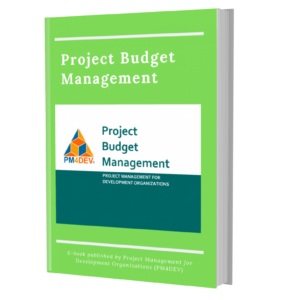Managing Project Costs and Budget

Estimated reading time: 4 minutes

Managing Project Costs and Budget
To a project manager, cost management is a vital responsibility. A project budget is the total sum of money allocated to achieve particular goals of the project for a specific period of time. To successfully carry out a successful project, here are the 4 success criteria:
- Project’s scope is delivered on schedule
- Project is delivered within budget
- Once project is delivered, it meets the quality expectations of the donor
- Once project is delivered, it meets the quality expectations of the beneficiaries
Due to the tedious process of creating a budget, few managers spend the extra time to analyse and update the budget after it is approved. Hence, it often leads to cost overrun which can be one of the most unexpected and frightening situations that project managers would want to avoid. To solve this issue, what can be done is to create and manage the budget properly.
One tip will be to really understand what a budget is and what it is for. After approval of the budget, it is necessary to continue to update and monitor the budget. To start off, here are the 4 steps for an effective management of project costs and budget:
- Define the budget
- Execute the budget
- Control the budget
- Update the budget
- Define the budget
The definition of the budget, done by the project manager, will include the objectives of the budget as well as estimation of all costs needed to complete the project activities – inclusive of human capital, equipment, supplies and any other resources. Two main types of estimation methods are the top-down and bottom-up methods. After collating all information together, a budget management plan will have to be done. The completed project budget proposal can then be sent for approval.
- Execute the budget
After the budget has been approved, it will be execution time. One mistake many project managers make is that they neglect the budget after step 1 has been completed. Polishing of the budget has to be done regularly and revised accordingly if any assumptions made during the definition of the budget are violated or if there are any unexpected expenses.
- Control the budget
By constantly monitoring and controlling the budget, it ensures that only the relevant budget changes are included and that any unnecessary added costs would be avoided. An analysis of the budget performance will have to be done to identify deviations, if any, and to develop corrective measures. One way of measuring the project progress objectively will be through the Earned Value Management (EVM) system which involves the calculation of the objectives’ earned value from the project’s Work Breakdown Structure (WBS).
- Update the budget
For any budget changes, they will have to be updated in the budget. For scenarios of cost overrun, it will then be necessary to think of alternatives or trade-offs to reduce the cost e.g. changing different inputs to achieve the same output.
By going through the above-mentioned 4 steps, the process allows project managers to be regularly in sync with the budget, empowering them to take immediate actions in cases of unforeseen circumstances. It will also allow project managers to pick up tips and tricks along the process and apply those lessons learnt, in their next budget planning.
To learn more about the specifics of managing project costs and budget, the Project Management for Development Organizations (PM4DEV) has published an e-book on proper project budget management. The e-book aims to serve as a general guide on how to manage and control the project budget throughout the entire project life cycle while relating budget control to the other success criteria. It covers detailed specifics on the 4 main steps of project cost management – defining the budget, executing the budget, controlling the budget and updating the budget.
Click below to download your free e-book
“Project Budget Management”
https://blog.opuskinetic.com/download-managing-project-costs-and-budget

